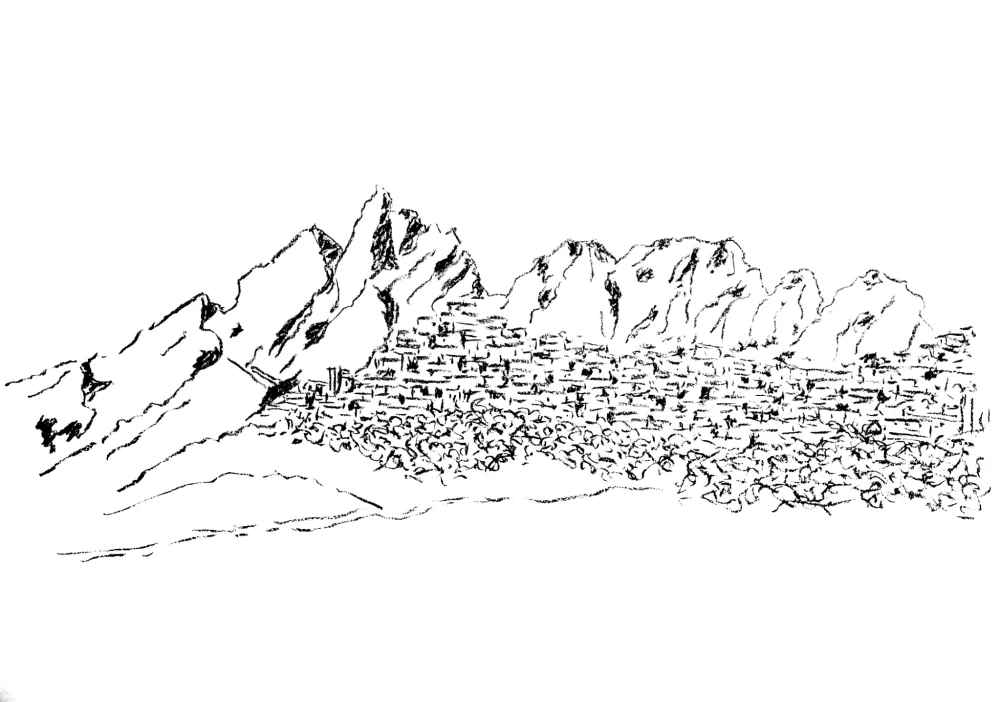HEMINGWAY’S PLACES IN LUCANIA, A BEAUTIFUL AND UNKNOWN LAND, IN THE DRAWINGS DEVELOPED FROM LIFE, IN SHOWCASE IN TRANI, “G.BOVIO” LIBRARY UNTIL OCTOBER 31
The exhibition was born from the idea and continuity of Leonardo Da Vinci’s drawings, made in the summer of 1473, at the age of 23, depicting the Valdarno.
A historical moment for painting and drawing, in which the then Western art tradition regarded the landscape only as a background and not as a “main autonomous subject”.
My drawing technique combines the lines of Leonardo’s drawings with Michelangelo’s sculpture. I have combined the detail and precision of Leonardo’s drawings with Michelangelo’s ability to sculpt forms to their minimal descriptive limit. This approach created the technique that characterizes my exhibited drawings.
From these points of view “conceptually and physically”, the drawings developed in Lucania, in the places where they lived Ernest Hemingwaythey have the ambition to want “know” e “possess” the beauty of the world and the natural environment, which makes painting and drawing possible “the highest possible speculation”. That is, through the highest possible research and the ability to capture reality through drawing, adding the imaginary and the visible and expanding the field of knowledge.
Lucania by Carlo Levi
Hemingway’s human experience and journey to Lucania, in southern Italy, between Puglia and Lucania, in a beautiful and unknown land, began with the meeting of Carlo Levi in Rome. It was the summer of 1959 and Ernest was turning sixty.
Levi’s pictorial works introduced him to Lucania and the journey into architecture and landscapes between Basilicata and Puglia.
An encounter that started Hemingway on a physical and metaphysical journey along the Basento, between the hills and the untouched Lucanian Dolomitesin an unspoilt paradise.
Lucania seemed to him a place stuck at the beginning of time, to which you must return again and again if you want to trace the basic ecological and human values.
A living and vital force ready to become form
A place that expresses free humanity, in the fullness of life, not dried up by abstract reason, that expresses a true, deeply rooted image; expression of multiple meanings of a broader reality.
In it, simultaneity, time and the unity of everything coexist and coexist in the natural, architectural and landscape environment that contributes to the formation of the ecological identity.
Basilicata as seen by Ernest Hemingway
Hemingway became passionate about the landscapes around Aliano, Castelmezzano, Pietrapertosa (in the cover photo), Tursi, Accettura and the villages in the mountains.
The American writer became passionate about the legends of farmers and gods mammothwhich is believed to have been present in Lucania and Puglia in ancient times. It is said that some remains have been discovered in Lake Atella, confirming the popular stories about Castelmezzano and Pietrapertosa. In these places a barren mountain is called an ancient fossilized mammoth.
The air, the water, the grass, the trees and the houses of that country breathed memories and therefore also stories. Hemingway was especially fascinated by people and the profound connection between people, animals, environment, shapes, materials, spaces and landscapes.
He observed with amazement the spontaneous compositions of the villages, the artistic technique, the lime on the walls, the donkeys, the forest and the cracks in the mountains. The gullies, the peaks, the lanes, the trees, the flowers and the moss-covered stones enchanted him.
For him, the architecture and environment of this part of southern Italy were an absolute discovery, a unique world. It looked like one “Earthly paradise” forgotten, where someone had planted seeds from which stories emerged, such as those of mammoths and gods white elephants spotted between Puglia and Lucania.
The life drawings of Hemingway’s Lucania
I decided to redo Hemingway’s trip to Italy on the occasion Matera Capital of Culture 2019visiting the places Ernest Hemingway had seen and experienced. I stopped at each of them, not to write or describe them, but to draw from life the landscapes he had crossed.
Accettura, Aliano, Castelmezzano, Pietrapertosa, Tursi. These landscapes are rich in architecture, signs, memories and stories. They come from the past, but are designed to give depth and meaning to the present.
Appendix to “Life drawings” the summary text “Fernanda and the White Elephants by Hemingway”, by Raffaele Nigro – Rizzoli, Milan, 2010
© Domenico Tangaro Art


